The History of Chicago’s Pizza(s)
By Ian MacAllen on Monday, August 19th, 2024 at 5:44 pm | 6,771 views
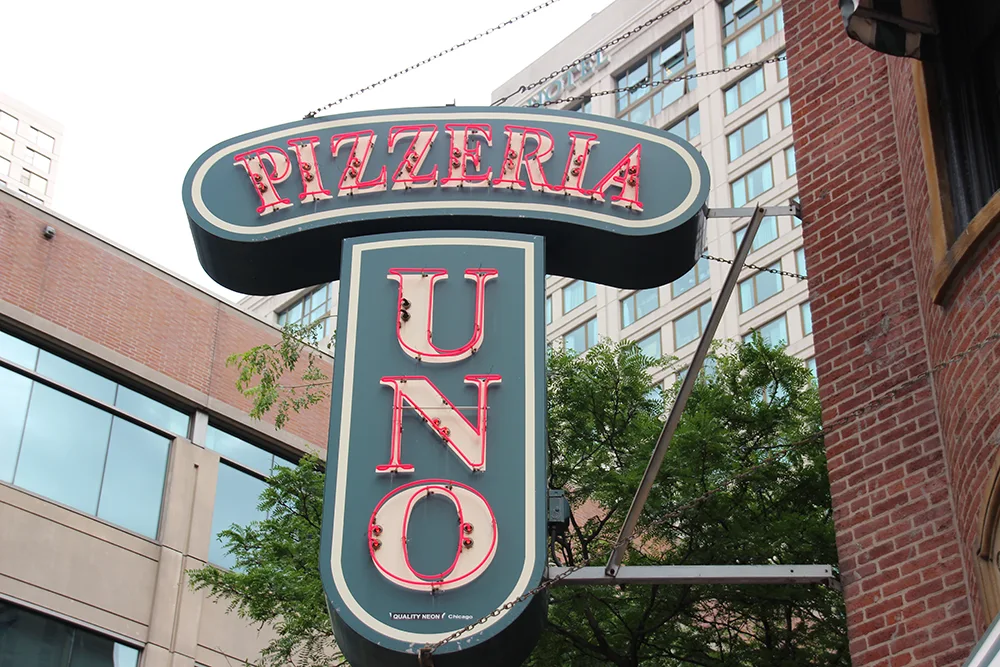
Chicago’s history with pizzerias is almost as old as New York City’s. Both cities became destinations for Italian immigrants, and soon after, rivals in pizzamaking. Chicago is perhaps best known for a thick-crusted, pan-cooked deep dish pizza, but there’s more to Chicagoland pizza.
Food writer and cultural critic Jason Diamond has previously declared Chicago’s tavern style the rightful signature pizza of the windy city, and he’s not alone. Earlier this summer, Pizza Hut launched a Chicago-inspired tavern style pizza, claiming they are the “first global pizza chain to offer a Tavern Pizza.”
Tavern pie is a thin-crust pizza, usually cut into square slices, sometimes known as the party cut. The dough is especially thin, and the sauce is much less important than the cheese and other toppings. The cooked crust has been described as like a cracker. And perhaps not surprisingly, tavern pie originated not in an Italian bakery but in the city’s bars.
Chicago’s pizza culture dates back to just a few years after the arrival of Italian immigrants. Today, Chicago ranks third behind only New York and Philadelphia with almost 500,000 people claiming Italian heritage. In the 19th century, Italian immigrants began settling around Taylor Street, where destinations like Ferrara Bakery and Al’s Italian Beef had their origins.
Perhaps unsurprisingly, the earliest pizzas that could be found in Chicago were also located on Taylor street. Granato’s Pizzeria Napolitana is maybe the oldest dedicated pizzeria in the city. An article in the Chicago Tribune in 1939 cited Tom Granato’s as the only pizzeria in the city at the time, and places the opening of the shop around 1923.
The pizza itself is described as like an English muffin– crispy on the outside and soft in the middle. That description might sound more like a New York or Neapolitan style pie than the crispy tavern pie that would come to dominate the midwest. Granato also sold stuffed pasta and eggplant parmigiana.
Granato’s began as a bakery and closed around 1961. A Tribune article from 1970 laments the end of what the author declared to be the first ever pizzeria, a dimly lit restaurant with a few booths and red checkered tablecloths. While remarkable for creating the quintessential pizzeria, Granato’s was not serving up the iconic tavern pie. It also wasn’t the only place to find a pizza in Chicago.
Another Taylor Street establishment, Pompei, was founded in 1909 by Luigi Davino. Pompei, named for the nearby Our Lady of Pompeii Church, also began as a bakery. When exactly the bakery began selling pizza is unclear, but the pizza they sold was exclusively topped with cheese.
Luigi and his sons eventually opened a restaurant by the same name and found success selling classic Italian American dishes. Pompei expanded around the region, peaking at seven restaurants. Eventually, Roger Davino, a grandson of Luigi opened a Pompei Xpress restaurant. Ralph Davino, who owned Pompei eventually sued to block the use of the name. Ultimately Pompei Xpress was forced to change its name.
Neither of these early pizzamakers were selling what would become the iconic tavern style pie. They were, it seems, more like New York City’s earliest pizzamakers selling a food to an ethnic enclave, otherwise unknown by non-Italians.
Tavern Style is Born
East coast pizza traditions also have the equivalent of the tavern style, better known as a bar pie. In places like New Jersey, Connecticut, and Long Island, bars around industry and factories where Italians worked would often sell bar pies. These thin crust pizzas, at least on the east coast, were typically sliced into triangular shapes, similar to the New York slices. Like Chicago’s tavern style, the crust was especially thin – they were meant to encourage drinking, not fill customers up with bread.
Tavern pies in Chicago are distinctively crispier than their east coast cousins. The extra thin crust, with a cracker like crispiness, comes from how Chicago pizzamakers flattened their pies. East coast pizzaiolo were more likely to follow Neapolitan traditions, stretching the dough by hand or even tossing it in the air. By contrast, Chicago’s bakers were more likely to roll the dough flat with a rolling pin. Fewer people from the Naples area settled in and around Chicago. The resulting Chicago pies ended up thinner and crisper in part because the air from the yeast would be pushed out of the dough.
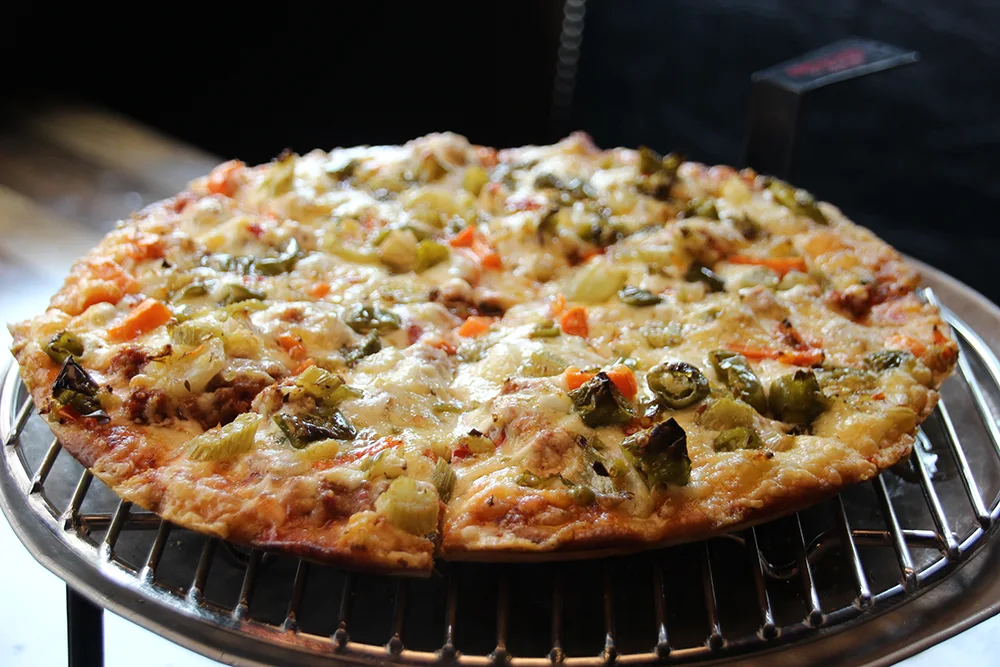
Chicago’s tavern pies likely date back as early as the 1930s, although it seems nobody has an exact date. That would correspond to similar bar pies in places on the east coast and cities like Detroit (although Detroit’s bar pies were baked in pans and evolved into a Detroit square style).
It’s not a coincidence. Prohibition ended in 1933, allowing bars and taverns to reopen and legally serve beer once again. During this time, the country was still reeling from the Great Depression and cheap bar food was an obvious way to entice people–men, especially laborers–to the bar.
One of the oldest taverns serving up pizza is Vito & Nick’s, part of long and storied Chicago drinking history. Vito and Mary Barraco first opened a tavern near the South Loop Printing House District around 1923. Vito’s wife Mary cooked, serving up a Sicilian-inspired menu that mostly included sandwiches and spaghetti. Despite Prohibition, they did well enough to open a new location, Vito’s Tavern, in 1932.
Vito’s Tavern then moved again to a location boasting 8 tables where they served the homestyle Italian American favorites, but no pizza. Then in 1945, Barraco’s son Nick joined the family business after returning from the war. It was then that the family began selling pizza topped with cheese and sausage. The family’s descendents believe Nick was the one who began cutting the pizzas into square slices.
Tavern pies really caught on in the 1940s. Mary Grittani and her son-in-law Nick Perrino started selling tavern pies at Home Run Inn around 1947. According to the shop’s website, the pizzeria earned its name after a baseball from a neighborhood park smashed the window, earning the hitter a homeroom.
Another early pizzeria with tavern pies was Italian Fiesta Pizzeria. The shop was founded in 1944 by Phillip and Connie DeCarlo, but moved from its original location in the 1950s. According to Steve Dolinsky, in The Ultimate Chicago Pizza Guide: A History of Squares & Slices in the Windy City, the square sliced pizza was a staple for Michelle Obama while growing up in the southside of Chicago, a reward for earning good grades.
Pat’s Pizza was founded in 1950, a venture between sister and brother Leona and Nicholas “Pat” Pianetto Sr.. But like all good Italian families, the siblings had an argument, and, according to DNA Info, Leona launched her own pizzeria. Leona’s grew into a local chain and was sold, but Pat’s Pizza remains family-owned and continues making thin-crust tavern style pizza
By the 1950s, tavern pies were becoming a big part of Chicago pizza cuisine. In 1952, Nick Barraco, the son of Vito and Mary, opened his own tavern, calling the restaurant Vito & Nick’s in homage to his father. Today, Vito & Nick’s is known as a destination for tavern style pizza, with a legacy dating back to the earliest days of tavern pie.
Discerning midwestern pizza eaters may have noticed that St. Louis style pizza is similar to Chicago’s tavern pizza. But that’s not a coincidence. St. Louis pizza didn’t get its start until the 1940s, when Amadeo Fiore, an opera singer from Chicago, moved to the Gateway to the West. Fiore opened the Melrose Café & Pizzeria in 1947, creating the St. Louis style pie, modeled on the tavern pies in Chicago.
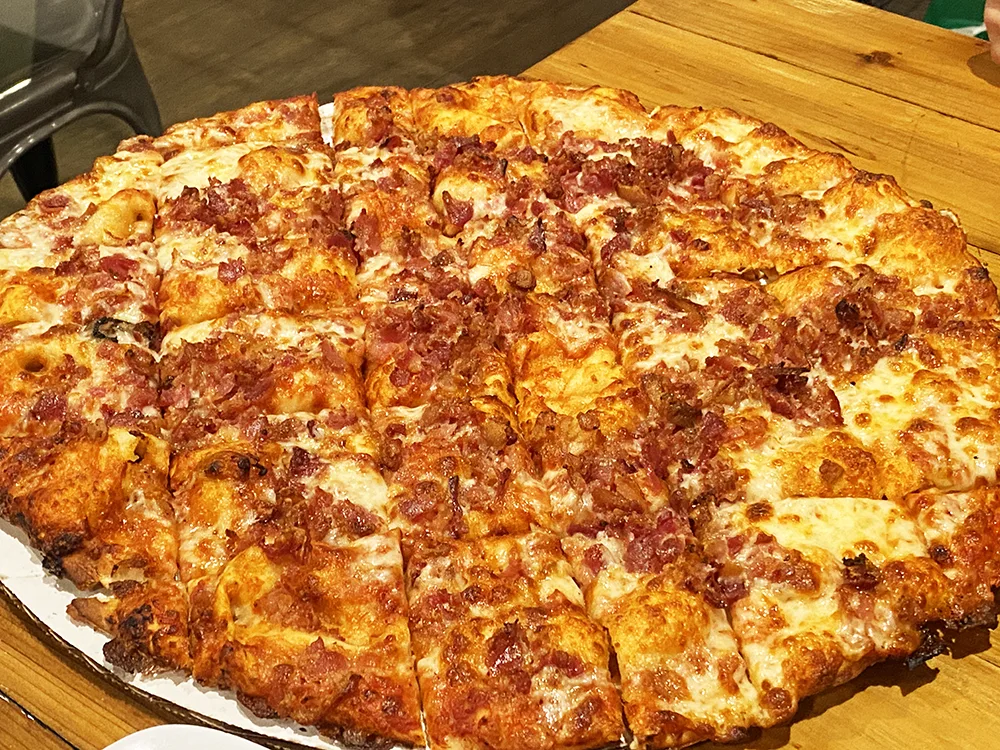
Pizza’s mass appeal in the post-war period is often attributed to the troops returning from World War II after eating pizza in Italy. While certainly some military men probably tasted the Italian peasant food, there’s a more basic technological evolution. In post-war America, pizza was finally baked in gas-powered ovens. Ira Nevin, an aerospace engineer and son of a bricklayer, patented several innovations leading to gas-fired pizza ovens. His Baker’s Pride brand became a standard in pizzerias along the East Coast. Unlike the coal bread ovens or the wood ovens used in Italy, gas ovens could be turned on with a switch. In post-war Chicago, another oven brand became popular for pizzerias.
John Fauld’s, a Scottish immigrant, had developed an oven system that involved rotating internal components. By the 1950s, Chicago area pizza parlors began installing the machines. Inside the massive ovens, a Ferris wheel-like contraption rotated as many as 30 pizzas. The company went out of business in 1972, but there are about a dozen ovens remaining in the Chicago area.
As regional pizza styles have grown in popularity, Chicago’s tavern-style pies have seen their profiles raised with writers like Kenji López-Alt extolling its virtues in the New York Times and Eater delivering an essential guide to Chicago’s tavern pies. Even Pizza Hut was getting in on the extra thin, crispy pizza. The chain introduced a tavern-style pie crust known as The Edge in 1997, but it was a limited time offer. Then in the summer of 2021, brought back that original recipe. The success of that promotion likely led to the addition of the Chicago Tavern style this year.
The Invention of Deep Dish Pizza
With all this love and affection for thin-crust pizza, how did deep dish become the pizza style most synonymous with Chicago?
Deep dish pizza began much like a tavern style pizza, as food to serve people drinking alcohol. Ike Sewell, a Texan who had come to Chicago as representative for an alcohol distributor, had always wanted to open a restaurant. He had plans on opening a place with a Tex-Mex menu. At the time, tacos were not yet widely available across the country, and it would have been an innovative concept. But Sewell met Ric Riccardo, who had some experience in the restaurant business. Riccardo however, felt ill after taste testing the Mexican-inspired menu, and suggested a pizzeria concept instead.
Chicago still had only a few pizzerias and while tavern pies were almost certainly becoming more common, Riccardo’s pizza concept was unique. He wanted a thicker, more filling pizza meal, but there has long been some dispute over who exactly developed the thick crust recipe.
Riccardo, an Italian American, had come to Chicago in the 1920s, first as an artist, and at one point had operated a restaurant. Whether this alone qualified him to develop a unique pizza recipe is unclear, but Riccardo is said to have trained the cooks for his restaurant concept for weeks to make sure they had gotten the recipe right. However, even if he created the original recipe, a few others contributed to what became the successful recipe.
Rudy Malnati, who it has been said had a handshake partnership with Riccardo and Sewell, may have tinkered with the recipe. Malnati was a bartender and then manager of the restaurant. However, the primary source on this is Lou Malnati, Rudy’s son and founder of a competing pizza empire. Claiming a family legacy to the original recipe would certainly lend credibility to the Malnati brand.
Another contributor to the recipe was Alice Mae Redmond, who solved a critical issue with the dough. Redmond, a black woman originally from Mississippi, understood the need to add more fat to the dough. Much like a southern biscuit recipe, the added fat made the dough more pliable. In the case of the thick crust pizza, she added a lot more olive oil. She may not have created the recipe but she almost certainly helped perfect it.
The dough recipe has certainly evolved over time, but Riccardo published a version in 1945. Pizza historian Peter Regas, writing at Chicago Magazine, believes there are at least three different versions of the dough, one from when the shop opened, another with Redmond’s modification, and a third that evolved in the 1960s. Redmond may have been responsible for the later modification as well, but she eventually left in the late 1960s.
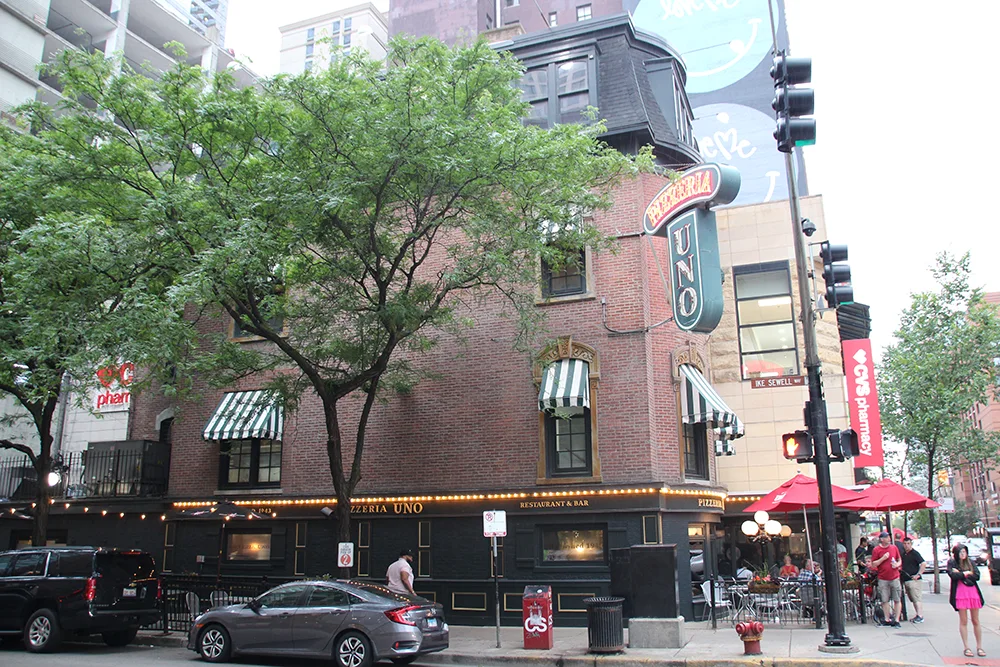
The restaurant concept opened in 1943 under the name Pizzeria Riccardo, but was not an immediate success. The location at the time was out of the way for many patrons, and the restaurant itself was described as dark. It also didn’t help matters that a freshly baked pizza took as long as 40 minutes to cook.
At the time, nobody had even heard the term “deep dish,” a phrase that first appeared in a student newspaper at Northwestern in 1971. In the early years, deep dish was better known as pan pizza, pizza in a pan, or thick crust. There are some parallels here to Detroit’s pizza evolution and other Sicilian breads that were cooked in pans, but the deep dish recipe was unique.
Sewell, who continued working his day job at the alcohol distributor, was responsible for marketing the restaurant, offering passersby samples. Eventually, Pizzeria Riccardo was renamed to Pizzeria Uno in 1955. Still, the pizzeria may have closed had a local newspaper reporter not written up a positive review. The reporting led to a spike in customers.
The bump in sales was enough for a second location in 1956, Pizzeria Due. It opened a few blocks away, and despite sharing owners, some people swore the pizza at Due was better. Sewell finally retired from liquor distribution in 1962, and he eventually opened a Mexican restaurant. He continued overseeing the Pizzeria Uno and Pizzeria Due restaurants after Riccardo passed away, and controlled the brand through the late 1970s.
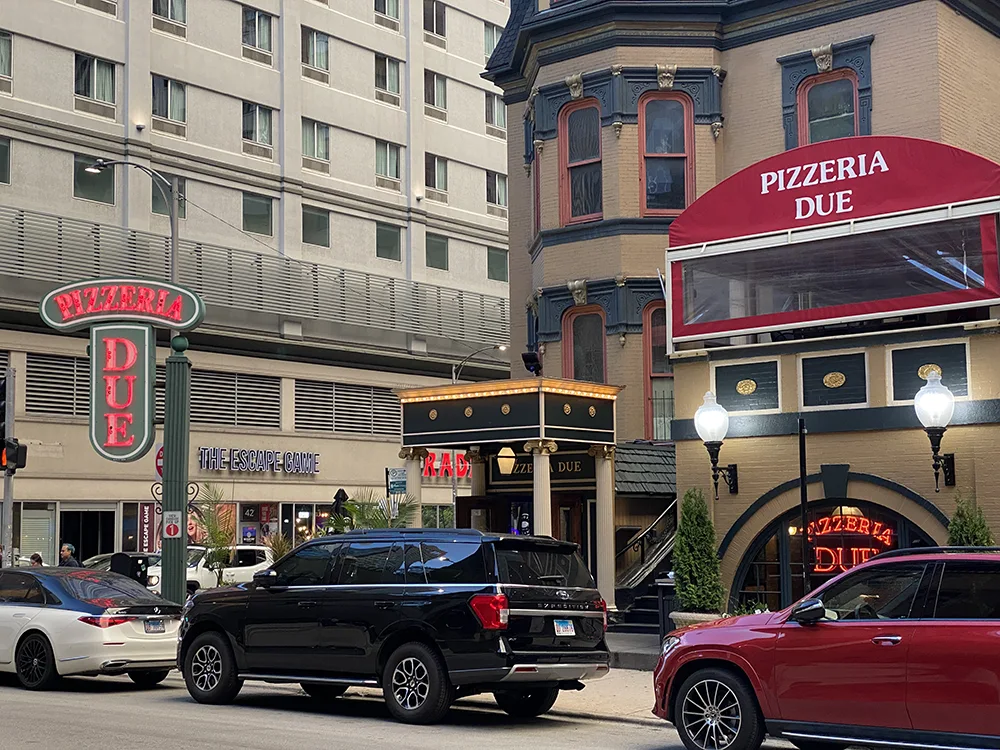
What helped make deep dish pizza legendary in Chicago was the spread of competing pizzerias. In the same way Lombardi’s in New York led to a number of other pizzerias opening across the city, Pizzeria Uno and Due spawned a number of competitors through the years.
One the first of these was Gino’s East, opening in 1966. The owners, Sam Levine, Fred Bartoli and Geore Loverde were taxi drivers. For their pizza recipe, they turned to Alice Mae Redmond, hiring her while she still was cooking for Riccardo and Sewell. For a while she maintained jobs at both restaurants, but eventually was forced to choose. She stuck with Gino’s East where she worked for another three decades.
Gino’s East has expanded over the years. At its peak, there were ten restaurants in the Chicago area, and in 2018, Gino’s East had plans for a location in Mexico City. Today the number has contracted. Locally there are just three restaurants now in the Chicago area, with outposts in Lake Geneva, Wisconsin, Los Angeles, and Singapore.
Another direct descendent of Pizzeria Uno’s success is the Lou Malnati’s chain. Lou Malnati, the son of Rudy Malnati, had worked at the restaurants run by Riccardo and Sewell, and in 1971 decided to found his own restaurant. Rudy stayed behind, supposedly out of a sense of loyalty.
However, Tragedy struck Malnati’s in 1978 when Lou died of cancer. His eldest son Marc, who had just graduated college, joined the family business. The family still runs the restaurant chain, which has grown to 60 Chicagoland locations, with additional nationwide spots opening in places like Arizona. These are not franchised locations, and each one is run by the Malnati family business, although backed by additional capital.
While Gino’s East and Lou Malnati’s grew into chains, they are not the only Chicagoland pizzerias with links to Riccardo’s and Sewell’s original stores. Helen Delisi had worked as a waitress at Pizzeria Uno for fifteen years before opening Delisi’s Pizza in 1977. Louisa DeGenero, who had at one time worked at Pizzeria Due, opened Louisa’s Pizza & Pasta in 1981 in Crestwood, Illinois. Bartoli’s, a restaurant that opened in 2013, was founded by Brian Tondryk, the grandson of Gino’s East Co-founder, Fred Bartoli.
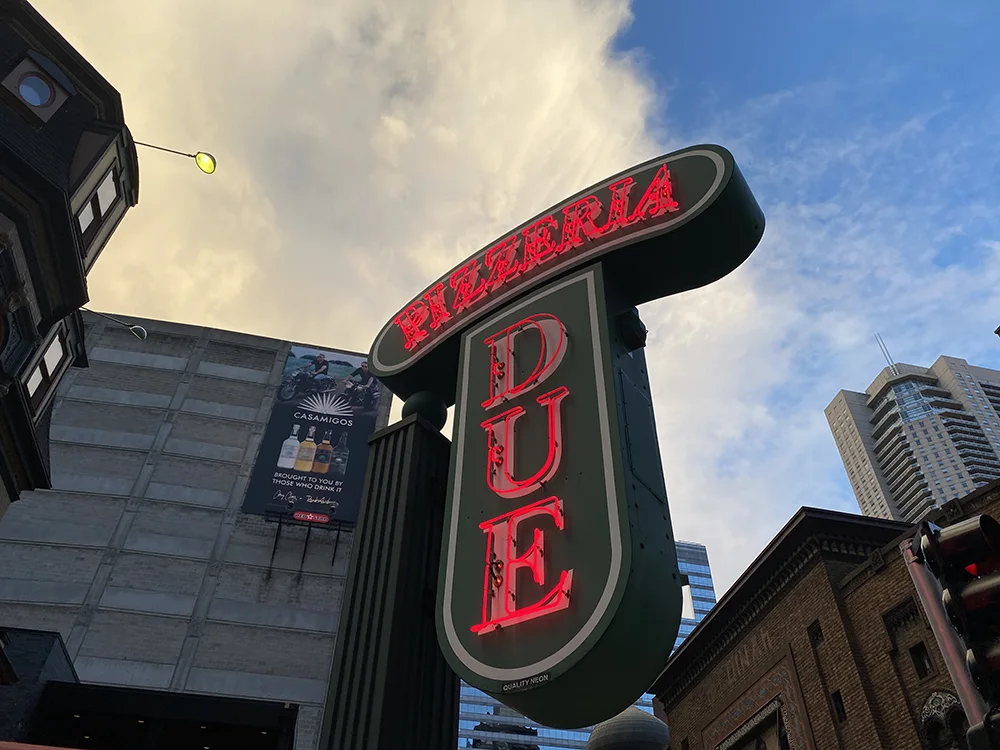
Deep Dish Conquers the Nation
Deep dish pizza, particularly in the early years when it was known as pan pizza, was largely a local-to-Chicago cuisine. Gino’s East and Lou Malnati’s may have popularized it in the windy city, but the spread of deep dish pizza nationally would begin in Boston.
Aaron Spencer, a Boston-based investor who had helped bring Kentucky Fried Chicken franchises to New England, decided to pivot to pizza. Spencer had come to Chicago for a meeting of franchise owners. During this conference, the attendees were fed Pizzeria Uno leading Spencer to explore the idea of franchising the business.
At first, Sewell was reluctant (Riccardo had passed in 1954). He was well connected in Chicago and had no interest in a national presence. Over three years of correspondence between Spencer and Sewell finally led to a test restaurant in Boston in 1979.
The experiment almost failed. Chicagoians may have been accustomed to waiting forty-five minutes for a pizza, but the people in Boston had places to be. The long wait times dissuaded many Bostonians. Spencer had to find a solution if he wanted to franchise the product. Steve Adams in the State Journal Register reports that Spencer invested in a new cooking method to reduce the time to as little as 15 minutes, an acceptable wait time. With the change in place, he was able to expand the restaurant.
Spencer and Sewell eventually came to terms to grow the restaurant, and in 1980, the first franchise opened in Washington D.C., with the 50th location opened in 1988 in New Hampshire. Spencer had correctly predicted the rise of the fast casual chain restaurant, a form of dining that came to dominate the restaurant scene in the 1980s with restaurants like Applebees (1980), Olive Garden (1982), and Macaroni Grill (1988) sprouting up to feed Americans.
Spencer’s deal also corresponded to a big shift in how Americans began eating pizza. By 1984, pizza restaurants outnumbered burger joints, and almost 10% of all restaurants were pizzerias at the time. Wolfgang Puck was serving gourmet pizzas at Spago, and Spencer’s Pizzeria Uno chain a step above fast food like Pizza Hut, Little Caesars, and Dominos.
The chain rode the wave of success fast casual restaurants experienced through the wealth of the 1990s and early 2000s, achieving 200 locations nationwide. In 1997, it changed the name to Pizzeria Uno, Chicago Bar & Grill and then later to Uno Chicago Grill. But in 2010, Uno Chicago Grill, as it had been called by then, declared Chapter 11. It emerged from bankruptcy with fewer company-owned and franchised locations, but not before having introduced deep dish pizza to America.
Deep Dish Conquers New York
It’s one thing to sell pizza to Americans, but it’s another to sell pizza to New Yorkers. New York was already known as a pizza city by the time Larry Goldberg showed up from the midwest in the 1960s. Originally from Kansas City, he had been a salesman for the Chicago Tribune, then came to New York, possibly working for the Wall Street Journal, before wining $1,000 in the New York State lottery.
With the winnings, he launched a pizza shop celebrating his love of midwestern pizza, including what was then being described as thick-crust. Perhaps most surprisingly, New York Magazine then named Goldberg’s Pizza the best in New York. The designation may be less surprising though in context. Even though New York’s slice culture had become an important culinary tradition, Goldberg’s non-traditional pizza was far more likely to get a nod from a trendsetting magazine in the same way the best pizzas in the city might now come from Neapolitan-style shops rather than neighborhood pizzerias.
In 1970, Goldberg wrote into New York Magazine himself to describe the crowds sent to his stores after the magazine highlighted his pizzeria. There were plenty of other fans who wrote into the magazine to laude the pizza as well. Goldberg expanded to have three separate shops and his iconic neon sign ended up in the Smithsonian collection.
Larry earned the nickname “Fats” from his friend Calvin Trillan, a food writer who had an affection for Italian sausage and pepper sandwiches. The nickname was one of affection after Goldberg shed significant weight, and kept off the pounds – a story he wrote about in Controlled Cheating: The Fats Goldberg Take It Off, Keep It off Diet Program. He also wrote the now famed Goldberg’s Pizza Book, in 1971.
Trillan also mentions Goldberg in his book, Quite Enough of Calvin Trillin: Forty Years of Funny Stuff, describing him as fashion-conscious, if stuck in 1950s fashion, and often handing out his paper menus.
Goldberg, as you might have guessed from his name, was not Italian, but Jewish, a fact that he used to market himself. He told Phyllis Malamud of the Newsweek Feature Service in 1971, “I’m not stealing anything from the Italians. I’m sure Italians could make excellent bagels if they put their minds to it.” And one of his pizzas included lox.
Ultimately, what Goldberg did was introduce thick crust, pan pizza cooked in the Chicago style to New York City, a decade before Pizzeria Uno franchises began populating the country. But between Goldberg in New York, and Uno Chicago Grill popping up everywhere else, there was a hard press to brand Chicago’s pizza style as the deep dish.
The Evolution of Deep Dish
In Chicago, as deep dish pizza was finally catching on, another pizzaiolo was changing the pizza game once more. Burt Katz created what he described as the “caramelized crust” pizza, a slightly less deep pan pizza with a crunchy crust consisting of caramelized cheese melted around the edge of the pie.
Katz was born in Chicago, traveled around the world for his honeymoon, and then in 1963, got his first taste of pizza parlor ownership by buying a stake in The Inferno, a restaurant in Evanston. At this location he first experimented with the caramelized crust. The pan pizza was cooked at a high temperature and turned the edges of the pie dark and extra crispy.
He sold his share of the Inferno two years later in order to launch Gullivers, another pizzeria where he experimented with the caramelized crust. He sold that pizzeria in 1968. Gullivers served pizza for another 56 years, only closing in 2022.
After a brief stint working at a corporate job, he returned to pizza making when he opened Pequod’s in 1970. Although he sold the shop in 1985 to Keith Jackson, it continues to serve pizza with the signature style pies. At the time he sold the restaurant, Katz was burning out from all the pizzamaking.
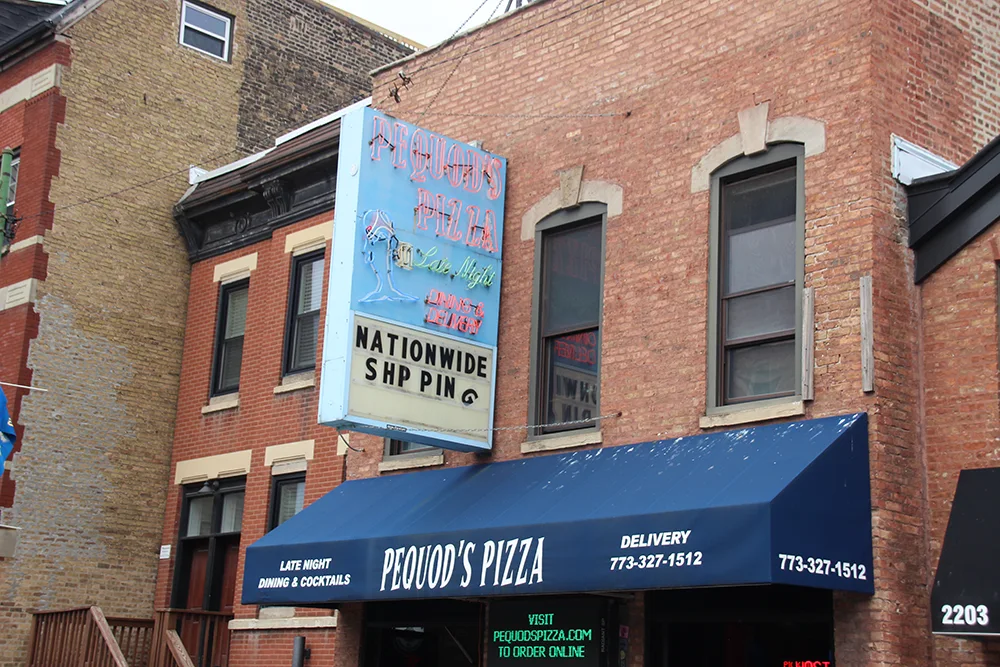
Katz wasn’t finished baking pizza though. Four years later he opened his finally shop, first named Starback’s, a play on the name Starbucks, another reference to Melville. He later renamed the restaurant to Burt’s Place, running the restaurant with his wife Sharon. Since it was a smaller restaurant, they requested patrons pre-order their pizza to ensure there was enough dough for each day, and to prevent the burnout that led Burt to sell Pequod’s. Burt’s place was featured in Saveur magazine, and Anthony Bourdain filmed an episode of No Reservations there.
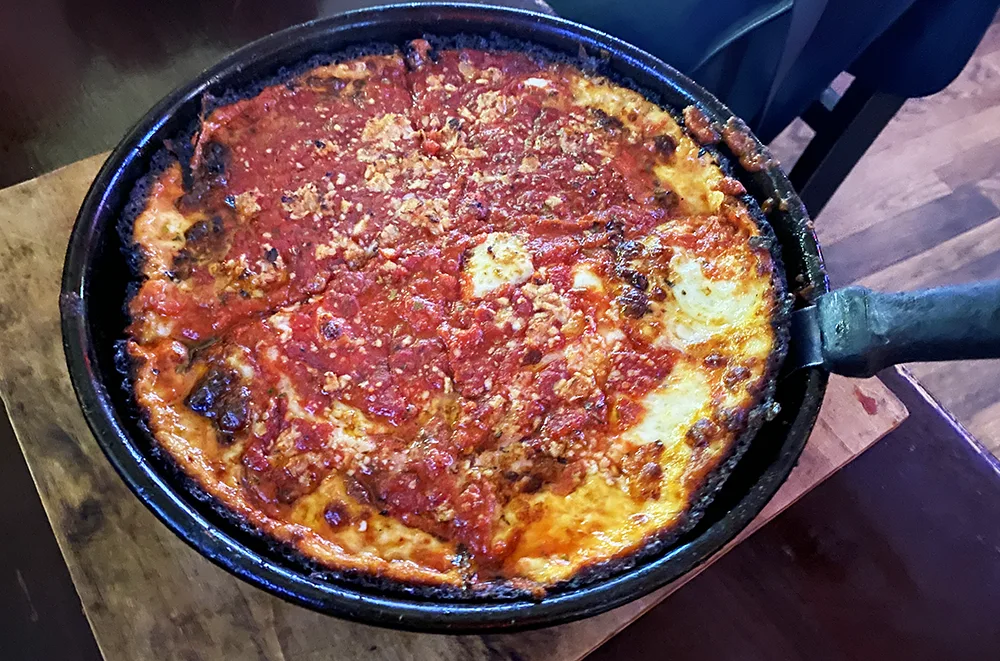
After making pizzas for five decades, Katz finally shut down Burt’s Place in 2015 after a cancer diagnosis. He died two years later. However, Burt’s Place reopened though, with two of Katz’s proteges at its helm. Jerry Petrow and John Munao spent months working with Katz to learn how to correctly make the signature dough and cook the pies to achieve the caramelized crust.
Chicago’s long history of pizza making has given us three distinct styles, and whether its deep dish, tavern style, or Katz’s caramelized crust, each today seems in a good position to continue to survive, both in Chicago and beyond.
Where To Eat It: Tavern Style
Vito & Nicks
8433 S Pulaski Rd, Chicago
Website
Italian Fiesta Pizzeria
8058 S Halsted St, Chicago
Website
Home Run Inn
(multiple locations)
Website
Pat’s Pizza
2679 N Lincoln Ave, Chicago
Website
Aurelio’s Pizza
(multiple locations)
Website
Where To Eat It: Deep Dish
Pizzeria Uno
29 E Ohio St, Chicago
Website
Pizzeria Due
619 N Wabash Ave, Chicago
Website
Gino’s East
162 E Superior Street Chicago
521 S. Dearborn Street, Chicago
Website
Lou Malnati’s
(multiple locations)
Website
Bartoli’s Pizza
1955 W Addison St, Chicago
Website
Where To Eat It: Katz Style Caramelized Crust
Pequod’s Pizza
2207 N Clybourn Ave, Chicago
8520 Fernald Ave, Morton Grove
Website
Burt’s Place
8541 N Ferris, Morton Grove
Website

